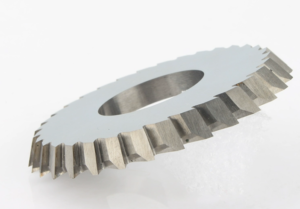Table des matières
BasculerTungsten Carbide Saw Blade
When it comes to woodworking and metalworking, the right tools can make all the difference in achieving precise and clean cuts. Among these tools, the lame de scie en carbure de tungstène stands out for both its durability and versatility. Selecting the appropriate tungsten carbide saw blade for your specific cutting needs can greatly enhance the quality of your work. This article will guide you through the factors to consider when choosing a tungsten carbide saw blade, along with the benefits and applications that you should keep in mind.
Comprendre les lames de scie en carbure de tungstène
Tungsten carbide is a material that combines tungsten and carbon to form a strong, heat-resistant compound ideal for cutting tools. Tungsten carbide saw blades are renowned for their longevity and ability to maintain sharpness even under strenuous conditions. This makes them a preferred choice in various sectors, including woodworking, metalworking, and construction.
But with numerous options available, how do you choose the right blade to suit your needs?
Blade Type: Different Cuts for Different Needs
The first step in selecting the right tungsten carbide saw blade is to identify the type of cut you require. Tungsten carbide saw blades come in various configurations, optimized for different applications.
For example, if you’re primarily working with hardwood, a blade featuring a high tooth count—like a 60-tooth blade—will facilitate smoother and finer cuts. This is particularly useful for intricate furniture making or cabinetry, where precision is paramount.
Conversely, if you’re cutting through thicker materials like plywood or chipboard, a lower tooth count, such as a 24-tooth blade, will be more effective. The larger gullets or spaces between the teeth allow for the removal of more material with each pass, making it easier to cut through denser substances.
Tooth Geometry: Impact on Performance
Another crucial factor is the tooth geometry of the tungsten carbide saw blade. The specific angle and shape of the teeth can significantly influence the performance of the blade.
For example, a blade with an alternate top bevel (ATB) tooth design is great for cross-cutting wood, delivering clean, splinter-free edges. On the other hand, a flat-top grind (FTG) is more suitable for ripping wood, delivering quick and aggressive cuts along the grain.
When deciding on tooth geometry, consider the projects you’ll take on. If you often switch between tasks, like moving from ripping to cross-cutting, a versatile combination blade might be your best bet, providing a balance of both styles.
Considérations matérielles
Understanding the material you will be cutting is equally important when selecting a tungsten carbide saw blade. Different materials present unique challenges and require specific blades to maximize cutting efficiency and minimize wear.
For instance, when cutting through metals like aluminum or brass, blades designated for non-ferrous materials, equipped with special coatings to prevent clogging, will not only last longer but also produce smoother cuts.
On the other hand, if you’re working with tougher materials such as stainless steel or HVAC ducting, a tungsten carbide saw blade designed explicitly for ferrous materials will be crucial in preventing the blade from dulling prematurely. This ensures that you achieve consistent results, regardless of the project’s complexity.
Blade Diameter and Arbor Size
A commonly overlooked aspect in choosing a tungsten carbide saw blade is the blade diameter and the arbor size. The diameter of the blade dictates the depth of cut, and it’s vital to select one that fits your saw machine.
For example, a table saw might utilize a 10-inch tungsten carbide saw blade, while a smaller handheld circular saw might only require a 7.25-inch blade. Ensuring that the diameter matches your equipment guarantees optimal performance and safety during operation.
Additionally, the arbor size—essentially the hole in the center of the blade that mounts onto the saw—needs to align with your saw’s specifications. Most blades come with different insert sizes, allowing you to adapt based on your saw’s design.
Price vs. Quality: Making the Right Investment
As with any tool, the price of tungsten carbide saw blades can vary significantly. While it might be tempting to choose cheaper options, investing in a high-quality blade will pay off in the long run.
Cheaper blades often wear down quickly and may not perform as expected, leading to more frequent replacements and potentially compromising the quality of your work. Conversely, a premium tungsten carbide saw blade may cost more upfront but can last significantly longer due to its robust construction, saving you money over time and providing reliable, precision cuts.
Choosing the right tungsten carbide saw blade is about more than just the act of cutting; it reflects your commitment to quality in your work. By assessing your cutting needs—considering factors like blade type, tooth geometry, material specifics, diameter, and investment—your choice will profoundly impact your project’s outcome.
Whether you’re a professional carpenter, a metalworker, or someone tackling DIY projects at home, investing in the appropriate tungsten carbide saw blade equips you to complete your tasks with efficiency and craftsmanship.
Remember, the right tools lead to better results, so take the time to evaluate your options carefully. A reliable tungsten carbide saw blade can make a world of difference, ensuring your cuts are clean, precise, and satisfactory. Embrace the quality and benefits of tungsten carbide saw blades—they will elevate your projects and inspire you to create with confidence.
